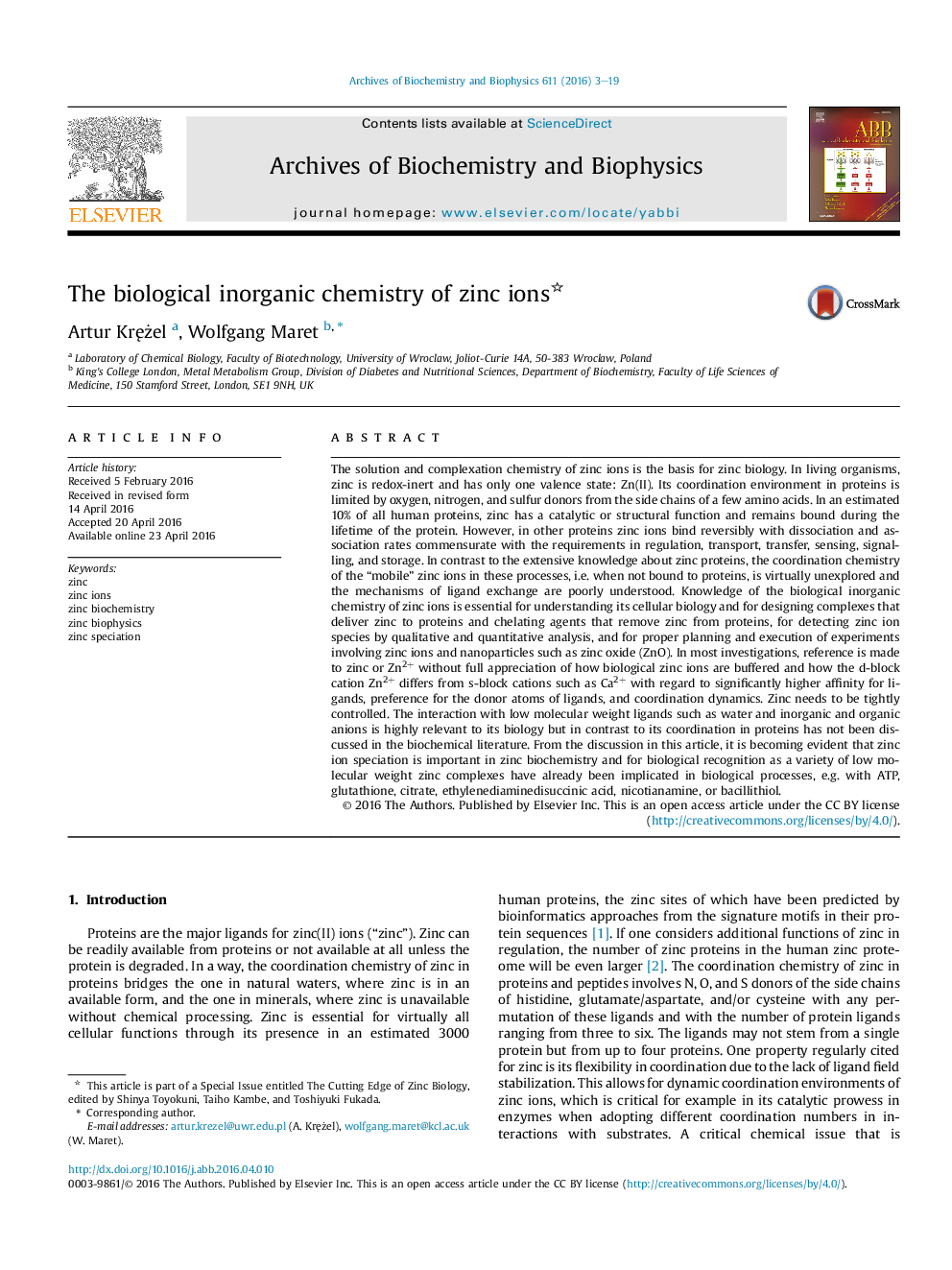| کد مقاله | کد نشریه | سال انتشار | مقاله انگلیسی | نسخه تمام متن |
|---|---|---|---|---|
| 5504500 | 1536292 | 2016 | 17 صفحه PDF | دانلود رایگان |

- Zinc ions not bound to proteins have critical roles in cell biology.
- Zinc has a unique coordination chemistry, poorly appreciated in the biosciences.
- Its coordination chemistry is significantly different from that of calcium ions.
- Specific conditions apply for buffering cellular zinc ions.
- Investigations with zinc need to consider solution chemistry and metal buffering.
The solution and complexation chemistry of zinc ions is the basis for zinc biology. In living organisms, zinc is redox-inert and has only one valence state: Zn(II). Its coordination environment in proteins is limited by oxygen, nitrogen, and sulfur donors from the side chains of a few amino acids. In an estimated 10% of all human proteins, zinc has a catalytic or structural function and remains bound during the lifetime of the protein. However, in other proteins zinc ions bind reversibly with dissociation and association rates commensurate with the requirements in regulation, transport, transfer, sensing, signalling, and storage. In contrast to the extensive knowledge about zinc proteins, the coordination chemistry of the “mobile” zinc ions in these processes, i.e. when not bound to proteins, is virtually unexplored and the mechanisms of ligand exchange are poorly understood. Knowledge of the biological inorganic chemistry of zinc ions is essential for understanding its cellular biology and for designing complexes that deliver zinc to proteins and chelating agents that remove zinc from proteins, for detecting zinc ion species by qualitative and quantitative analysis, and for proper planning and execution of experiments involving zinc ions and nanoparticles such as zinc oxide (ZnO). In most investigations, reference is made to zinc or Zn2+ without full appreciation of how biological zinc ions are buffered and how the d-block cation Zn2+ differs from s-block cations such as Ca2+ with regard to significantly higher affinity for ligands, preference for the donor atoms of ligands, and coordination dynamics. Zinc needs to be tightly controlled. The interaction with low molecular weight ligands such as water and inorganic and organic anions is highly relevant to its biology but in contrast to its coordination in proteins has not been discussed in the biochemical literature. From the discussion in this article, it is becoming evident that zinc ion speciation is important in zinc biochemistry and for biological recognition as a variety of low molecular weight zinc complexes have already been implicated in biological processes, e.g. with ATP, glutathione, citrate, ethylenediaminedisuccinic acid, nicotianamine, or bacillithiol.
Journal: Archives of Biochemistry and Biophysics - Volume 611, 1 December 2016, Pages 3-19